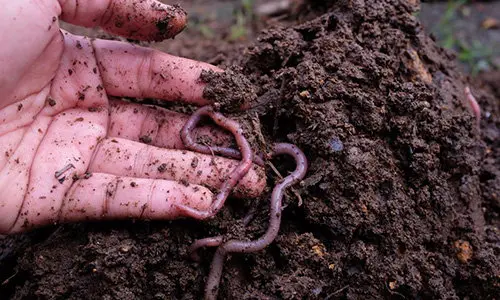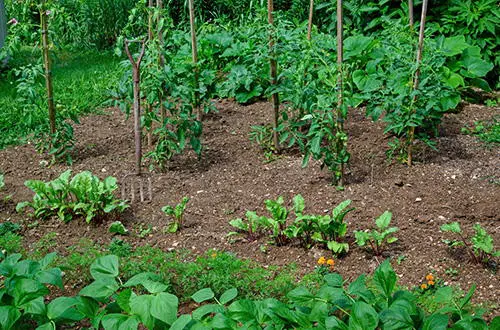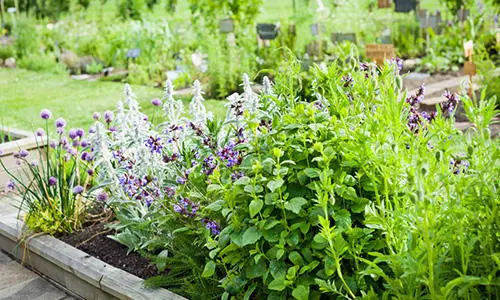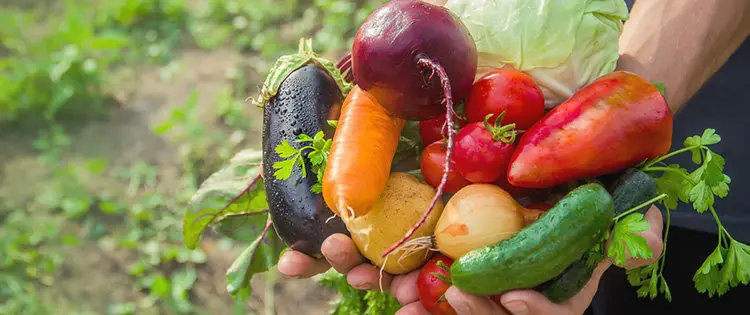Whether you’ve been growing your own food for a while or you’re just starting out, finding ways to maximize your yield and reduce your production costs is well worth the effort. But where should you start? Here are 5 Amish gardening techniques you should know.
Conventional gardening books and planting guides can give you good ideas and help you learn how to grow a garden in just about any space, but these usually advise home-growers to employ heavy use of synthetic fertilizers, harmful pesticides, and less than healthy planting materials.
They frequently promote the need for expensive planters, specialized growing bags or containers, a lot of tools, and synthetically-treated soil mixtures. If your goals include healthy, sustainable, and affordable food production, you may want to look to the masters of self-sufficiency instead.
The Amish
The Amish communities may be varied and spread out, but regardless of location, weather conditions, or geographical soil types, they have managed to grow enough food for their entire communities since the 1500’s. They also supply many marketplaces where the rest of us can purchase and enjoy the literal fruits of their labor.
We know that they are much healthier than the general population despite living in rural, remote areas, while refusing socialized public health services and other government assistance. All of the things we are taught will leave us hungry, ill, and somehow failing at life seem to do the complete opposite for the Amish people.
So what is it that they do to keep their soil fertile and their food abundant despite shunning access to modern world amenities?
I managed to gather some key techniques used by the Amish from interviews, research studies, and books. I have learned that their “small” family farms are often an impressive 70 acres or more in size, but these techniques can easily be applied in small suburban food gardens. I’ll show you how below.
1) They Prioritize Healthy Soil
There is a great reverence for land and soil within the Amish community. It is a big part of their spirituality and the main reason for their persistent success as a self-sufficient, thriving, off-grid society.
Understanding that your health and survival is greatly dependent on the caliber and sustainability of your land is what keeps soil quality at the top of the priority list. It is easier for those of us on the outside to neglect our land and soil, or even forget that the food on our plates came from the ground before it came from the restaurant.
This is likely one of the reasons the Amish remain steadfast on their independence from the outside world. Sometimes reliance and convenience make it easy to disregard the most important things. Employing this prioritized frame of thought onto your garden is an important step to crop success.
Related: Boost Your Soil Quality With This Compost

2) Traditional Crop Rotation
Unlike modern-day agricultural practices, the Amish still use crop rotation to grow food on their small family farms.
An example traditional 4-year rotation cycle starts off with alfalfa or clover, followed by corn, oats, and ends with wheat.
Since they still use horse-drawn equipment to work the land, the soil stays loose and is naturally fertilized by the horses throughout the process. This technique also keeps the amount of pesticide use to a minimum. Yes, the Amish adopted the use of some commercial and synthetic pesticides during the 1950’s and 60’s, however, their needed use is minimal due to the techniques employed and the movement towards certified organic farming is growing within their communities as well.
Related: 11 Items To Look For At An Amish Market
Because different types of crops require different types of nutrition, rotating from one family of plants to the other gives the soil time to replenish what was lost with the first crop, while feeding the new growing crop with the unused nutrients that are still abundant. The next crop will do the same. It works as a natural pest deterrent as well, since many pests and plant diseases are family specific, it never allows them to proliferate in one place for long. Rotating crops helps keep a garden naturally balanced for many seasons saving time, money, and providing the healthiest yields.
You can mimic this technique in your small garden by working with your hands or simple tools and rotating your plant locations every season. You could also add cover crops like alfalfa to the rotation in your home garden, and this will further assist in replenishing nutritional value to your soil.
Without the space for horses or the want of added expense to fertilize smaller home gardens, you could easily compost your food scraps or implement an aquaponic system. If you have enough space for chickens, you can use their manure in your compost as well.
Related: Everything You Need To Know About Crop Rotation (And Why You Should Do It)

3) Well Planned Companion Planting
Widely used for centuries, companion planting is a big part of Amish food gardens for its ability to provide biodiversity, repel pests and plant disease, maintain soil nutrition, attract beneficial insects, and suppress weeds. Planting in the right combinations can boost yields and promote strong and healthy root systems.
Planning the position of your crops to provide more sun or shade to their neighbors lets you plant a wider variety of foods in a smaller space.
Employing the use of specific flowers or herbs in your vegetable patches is also beneficial as you can create traps for common plant pests, or have a fresh source of nutrition. For example, you can plant marigolds and mint, dill, or basil with your tomatoes or peppers. These will both attract beneficial insects, provide root nutrition, and repel unwanted pests.

4) Medicinal Gardens
A lot of Amish housewives grow medicinal plants in a dedicated garden, usually these are planted closer to their homes near front or back doors.
If they keep a kitchen garden, medicinal plantings are often found mixed in, especially because most culinary herbs have medicinal properties, so combining them all to do their best companion work is just practical common sense.
Along with commonly known medicinal herbs and flowers such as basil, oregano, and chamomile, you will find things like goldenseal, wormwood, valerian, and echinacea growing too.
Although the Amish aren’t forbidden from seeking modern medical care, they often reserve their use for serious illness or emergency trauma care. For common viral illness, minor infections, and wound care, they seek the help of their gardens by making teas, balms, tinctures, or creams.
Honey is a staple food and medicine in Amish communities, so beekeeping is also a common practice among them.
One of their most well known remedies is their folk treatment for wound and burn care. It is so effective that many major medical burn units near Amish country employ it’s use. The main ingredient in this balm is Honey, but also includes olive oil, wormwood, and other herbs. The wounds are treated and then wrapped in burdock leaves before they are secured with gauze. It’s known as B&W Ointment and it is considered a comparable alternative to modern-day wound care.
Although bee-keeping may not be in your cards, a medicinal garden is something else you can easily incorporate into your home garden. Considering the recent expansive shortages, and the current state of the economy, it’s not a bad idea to have access to proven home grown remedies freely available at your doorstep.
Related: A Medicinal Garden Kit For Starting A Small Backyard Pharmacy

5) They Choose Heirloom Varieties
Heirloom or Heritage seeds are a top choice for the Amish garden. These are seeds that have been grown in cycles for 50 to 100 years or more without any trait changes from the original parent plant. The terms heritage and heirloom are often synonymous, with heirloom being used more frequently in the US, and heritage being a preferred term in the UK. “Heritage” seeds may also be promoted with a specific tradition or origin story, but for the most part, they offer the same thing, an unchanging, consistent plant yield.
Heirloom seeds are considered precious by many, and farmers, Amish or not, have a great respect in the treatment and storage of these seeds. As new crops grow, seeds are gently collected and stored for the following cycle.
Modern-day commercial farmers had to move away from Heirloom vegetables because their tractors destroy these gentle seedlings and the diesel fuel and rubber tires contaminate the soil. This is where the Amish have the advantage, because their horse-drawn equipment and wood wheels aren’t heavy enough to compact the land, destroy plantings, or contaminate the land.
As mentioned above, there is no need for tractors or harmful equipment in your home gardens, so employing these techniques at home is not only simple, but it will give you the healthiest, most affordable, self-sustaining food garden attainable.
You may also like:
 10 Canning Recipes From The Amish
10 Canning Recipes From The Amish
How To Store Food Without Electricity That Can Last Up To A Year (Video)
What to Eat When the Power Goes Out
25 Basic Life Skills That Should Be Taught in School (But Aren’t)









